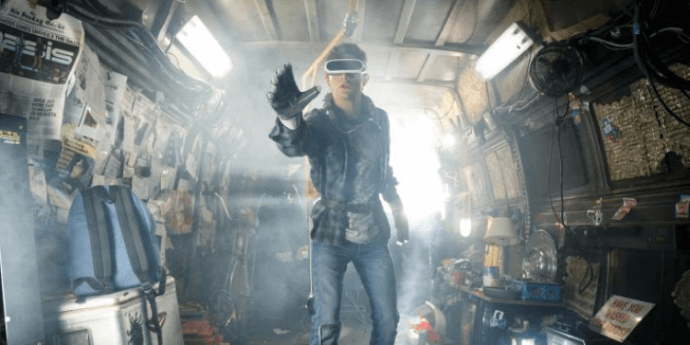
Digital Signage In A Post-Digital Display World
January 17, 2018 by guest author, Christina Condomaros

Guest Post: Ryan Cahoy, Rise Vision
This spring, Steven Spielberg will treat audiences to a story millions of readers already know: Ready Player One. The story takes place in a world where people rise and fall in an entirely VR world. It’s a concept that’s becoming more and more of a reality each year.
Over 2 million VR headsets have been sold, and it’s growing at rapid speed. All this begs the question: what will happen to digital signage in a post-digital display world?

Ryan Cahoy
When we think of VR, it’s easy to imagine slapping a headset over our face and entering a cyber world. That’s what we’ve grown up seeing in science fiction movies and books. While headsets certainly have their place in VR environments, it’s important to make one significant point: VR lives off headsets, too.
VR is an immersive digital environment. That can happen with or without a headset. Through VR, digital signage is no longer static displays – they’ll become living environments.
VR doesn’t erase digital signage. It enhances it. Suddenly users can interact with what you are displaying. A department store, for example, could create a display where users not only can see where products are located in a store, but what they would look like in the clothing – and the ability to send selected items right to their doorstep without ever picking up the physical item.
Parents could save a bundle by no longer having to actually visit a campus with their child to take a tour of a potential college. Through VR, they can tour the school from their home, and even walk into classrooms to see live streams of lectures in progress.
The hospitality industry could use it in a similar way – potential guests could see a room in a virtual environment before deciding if they wanted to stay.
For businesses, VR means presentations will have much more room for training. Obviously, VR can help bring remote workers into a virtual workspace that is potentially more productive. But the real benefit is with training – it becomes much more hands-on. Imagine being in a virtual meeting where the presentation comes to life–you can interact with it and collaborate with your team in real-time.
Digital beacons can be used to trigger alerts on phones and tablets to people passing by, to trigger apps that engage them even more. Advertisers and stores already use such beacons to send promotions. With VR, however, beacons can be used to continue a story and create a more personal experience.
Digital signage is really about telling a story on the screen, and VR is the same concept. But it’s turning that story into something that’s three-dimensional. To the industry, that means adding more layers to the concept that already has a foundation.
Will we one day live in the world that exists in Ready Player One? A world where people live, die, and breathe in a VR environment?
Probably not.
But VR is no longer just a buzzword people throw out to get people excited. It’s here. And it’s here to stay – and that’s a good thing. For the digital signage industry, that means it’s time to reconsider the way that we think about engagement.



Have you ever thought about publishing an e-book or guest authoring on other blogs?
I have a blog centered on the same information you
discuss and would really like to have you share some stories/information. I
know my readers would enjoy your work. If you’re even remotely interested, feel
free to shoot me an e-mail.